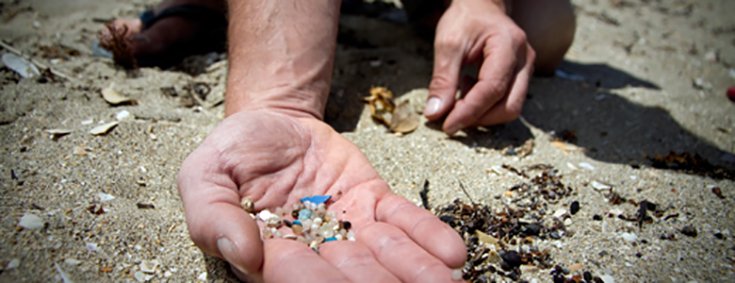Microplastics in the Ocean are Killing Baby Fish, Study Finds

Our seas are littered with plastic, and tiny bits of it are seriously threatening the environment, according to a study published in the journal Science. Researchers say microplastics – small plastic particles less than 5 millimeters in diameter – could be hurting the survival of European perch, as well as other creatures.

According to a 2015 study, an estimated 4.8 million to 12.7 million metric tons of plastic were dumped into the ocean in 2010 alone, and that amount is expected to rise. The issue has taken on another dimension as scientists have become aware of the issue of microplastics.

Read: Will There Be More Plastic than Fish in the Ocean by 2050?
Plastics don’t decompose in the water; instead, they break down over time into tinier and tinier pieces. These microplastics are especially dangerous to marine life because they are easy to digest. Tiny pieces of plastic have been discovered in the bodies of many types of animals, including clams and mussels, small fish, and birds.
Scientists are only starting to uncover how microplastics affect the animals that consume them, and how potential problems might climb the food chain and impact entire populations. [1]
For the study, European perch embryos and larvae from the Baltic Sea were placed in lab aquariums with varying levels of polystyrene microplastics, including concentrations currently observed in nature, EcoWatch reports. Polystyrene is used to make styrofoam.
The team of researchers found that larvae living in high concentrations of microplastic particles chose to eat the particles over plankton, the creatures’ natural food source.
Peter Eklöv, co-author of the study, told The Guardian:
“This is the first time an animal has been found to preferentially feed on plastic particles, and is cause for concern.”
Lead author Dr. Oona Lonnstedt explained to BBC News:
“They all had access to zooplankton and yet they decided to just eat plastic in that treatment. It seems to be a chemical or physical cue that the plastic has, that triggers a feeding response in fish.
They are basically fooled into thinking it’s a high-energy resource that they need to eat a lot of. I think of it as unhealthy fast food for teenagers, and they are just stuffing themselves.”

Read: Huge Discovery: Bacterium That “Eats” Plastic Waste
Could these microplastics threaten the perches’ survival? How might this affect the other animals – and humans – that consume the perch?
The study found that young perch living in high concentrations of microplastics were smaller and less active than fish living in average concentrations of microplastic particles. They also seemed to ignore the chemical signals that would normally warn them of predators.
When researchers put the fishes’ natural predators in the aquariums with them, pike consumed the perch 4 times more quickly than they consumed the perch living in normal conditions. All of the plastic-exposed perch were dead within 48 hours.
The fish that had been exposed to microplastics also had a lower hatch rate – 89% under the average concentration, and 81% under the high concentration, compared with 96% when no microplastics were present.
In other words, the chunks of styrofoam, the plastic bags, the microbeads found in cosmetic products tossed into the ocean…they are altering the behavior of fish and reversing the evolutionary changes in perch designed help them thrive in the water.
Lonnstedt said:
“If early life-history stages of other species are similarly affected by microplastics, and this translates to increased mortality rates, the effects on aquatic ecosystems could be profound.”
The perch had long been a fixture in the Baltic Sea, but citizens have noted in recent years that the fish seem to be declining. Scientists may now know why.
Read: Edible Silverware Could Cut Down On Plastic Waste and Pollution
Lonnstedt said the next step is to determine whether some types of plastics are more harmful than others:
“What we’re actually trying to do now is pinpoint…which plastic polymer is the worst for fish. Is it polyethylene? Is it polystyrene? Is it PVC?”
Sources:
